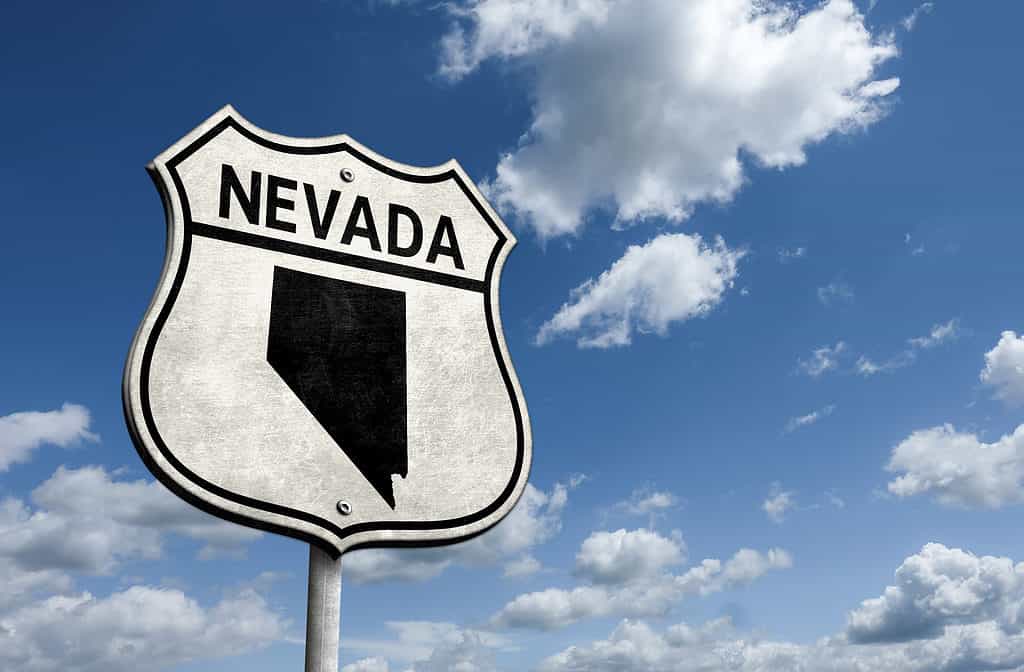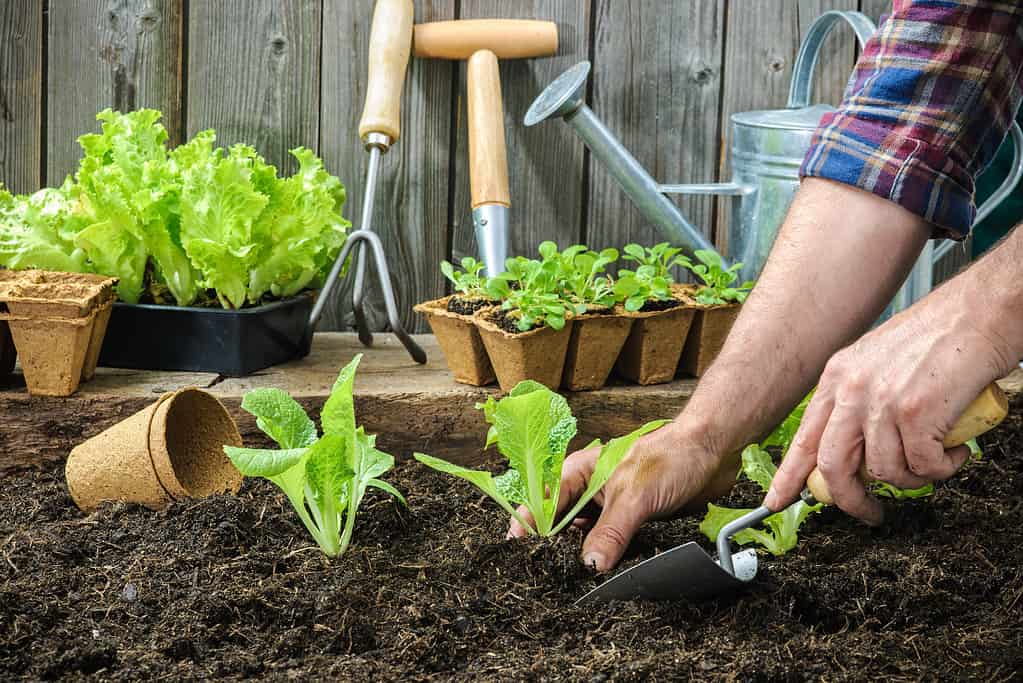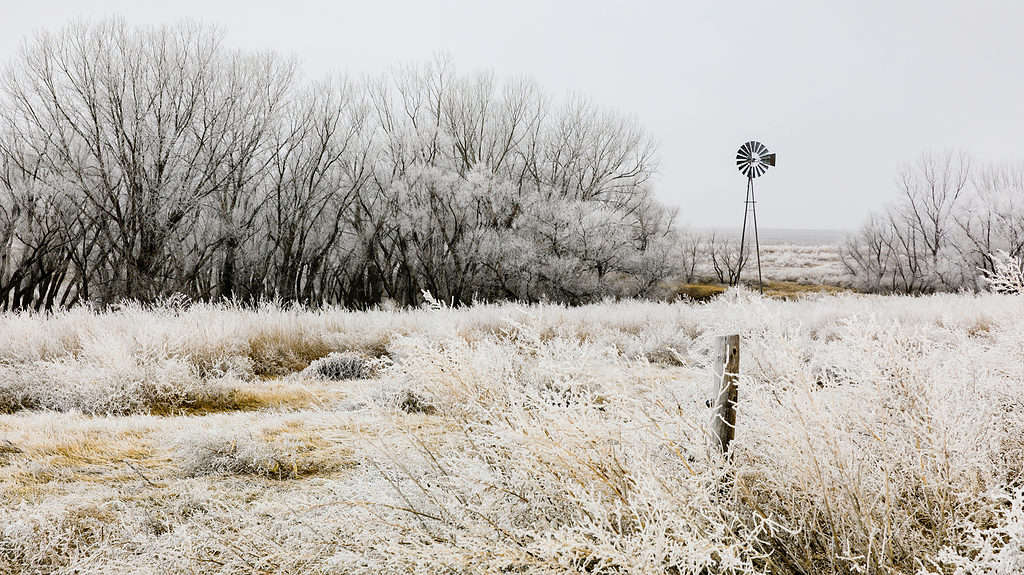Gardening is a fun pastime hobby that also bears fresh fruits and vegetables. Yet, the process is not the same in every place around the United States. Some states face blistering cold weather and the threat of powerful storms that could wreck gardens before they start. Take a look at some of the information that Nevada gardeners need to know before they start planting this spring!
Learn about Nevada’s general climate and the weather phenomena that threaten the state!
Nevada’s Climate Conditions

Nevada is the driest state of any in the country.
©iStock.com/gguy44
Historically speaking, Nevada gardeners don’t have the easiest time growing crops. The state’s agriculture is mostly geared toward raising livestock like cows, sheep, lambs, and hogs. While farmers do grow crops, they have somewhat limited land due to how much water is needed for irrigation.
Nevada has diverse Köppen climate types. Much of the state’s central state is considered cold semi-arid while much of the southwest is a cold desert and the southeast is a hot desert. The northeastern part of the state is warm-summer Mediterranean continental.
The bottom line is that much of the state is dry and lacks the precipitation to support crops. In fact, Nevada is the driest state in the entire U.S.! On average, the state receives about 10.3 inches of rain per year.
As part of that paltry annual rainfall, Nevada has many sunny days. The state sees between 210 to 252 days of sunshine each year, making it the third-sunniest state in the country.
As a result of the variability in climate, Nevada’s growing season is very short in some places and reasonably long in others. For example, Yerlington has a growing season of fewer than 90 days, but Las Vegas has a growing season of nearly 210 days.
On paper, Nevada has plenty of sun and warmth to help Nevada gardeners grow their plants and flowers. Yet, the region does face some challenges when it comes to growing a personal garden.
Challenges Facing Nevada Gardeners

Wind, heat, and a lack of precipitation can all cause trouble for Nevada’s gardeners.
©iStock.com/AlexRaths
The biggest challenge facing Nevada gardeners is usually the threat of drought. The state receives an average of 10.3 inches of rain, but some places only receive 7 inches in the driest parts of the state. Given that water is a finite resource, it’s not always easy to justify watering an expansive garden during times of water shortages.
The weather in the state can vary between pleasant and very hot. Las Vegas is the most populous region in the state. In January, the average daily high temperature typically hits about 57 °F to 61 °F, and the low temperature hovers between 38 °F to 41°F. By April, the average daily high temperature is usually in the 70s and 80s, and the threat of frost has passed. Of course, summers are brutally hot, with high temperatures regularly hitting over 100 °F and lows only falling to about 80 °F.
The state of Nevada rarely gets tornadoes, and it doesn’t get tropical cyclones like other states. Still, the springs and early summers in Nevada are notoriously windy. That means it’s necessary to protect burgeoning crops by staking them, putting them in cages, or placing them in a somewhat protected area around one’s home.
The biggest threats to Nevada gardeners are the unbearable heat and lack of natural precipitation. However, using the right soil, light mulch, shade cloths, and other structures to cut down on the amount of sunlight hitting the garden can help protect the gardens.
How Has Recent Weather Impacted Plants?

Heavy snowfall paralyzed parts of Nevada this past winter.
©iStock.com/kevinmwalsh
The winter season that started in 2022 has been unusually potent for some parts of Nevada. Several major storms and “atmospheric rivers” flowed from California and into parts of Nevada, dumping snow and other winter precipitation. Parts of the Lake Tahoe region received several feet of snow, and icy roads forced people to stay indoors. Most of this poor weather was confined to the Sierra Nevada region, though.
Fortunately, the impacts on plants in these regions would be minimal. The roots and bulbs of perennial plants that can survive this harsh region are mostly dormant below the soil. The biggest threat is that melting snow could inundate the roots and cause them to rot, but even that’s not a significant threat.
When Are the Last Frost Dates in Nevada?

A sudden frost can kill off plants before they have a chance to grow.
©iStock.com/Marine2844
Knowing the weather and climate difficulties facing Nevada gardeners is just one piece of the puzzle. People anxious to plant this spring in Nevada need to know the right time to put plants in the ground. The best measure of that is the last frost date. This is the date after which there is a very low chance that another freeze will occur. Some of these dates are close together, and some of them are many months apart.
| City | Last Frost Date |
|---|---|
| Las Vegas | February 11 |
| Reno | May 6 |
| Wells | June 17 |
| Winnemucca | June 2 |
Planting a garden in Nevada may require a very late start depending on where a person lives. However, since Las Vegas is the most populous area of the state, many people will be able to start planting when it’s technically still winter.
5 Plants to Grow for Nevada Gardeners (And When to Plant Them)

Green cucumber growing in field vegetable for harvesting.
©Tortoon/Shutterstock.com
Using the last frost date from Las Vegas, take a look at five different plants Nevada gardeners can grow in the state and learn when to plant them indoors and transplant them outdoors.
1. Cucumber
Start your cucumbers inside during the first week of February. Then, plant them outdoors from March 15 to March 29. Be sure to give them room to grow.
2. Eggplant
You can start your eggplant seeds inside as early as January 4 to January 18. You can then plant them outside beginning between March 15 and March 29.
3. Squash
Start squash outside between March 15 and April 12. Like other plants, they need room to grow.
4. Tomato
Start your tomatoes inside between January 4 and January 18. Then, transplant them outside between March 8 and March 29. Make sure to use cages or stakes.
5. Bell Peppers
Start your bell peppers indoors on December 21 to January 4. Then, start them in cages outside between March 8 to March 22.
Knowing when to plant your crops and flowers is key. Make sure to check the local weather outlook in your area before putting plants in the ground. While it’s impossible to know what the future holds, you can still get a good idea of the weather trends that should guide your planting calendar.
The photo featured at the top of this post is © Tricky_Shark/Shutterstock.com
Thank you for reading! Have some feedback for us? Contact the AZ Animals editorial team.






